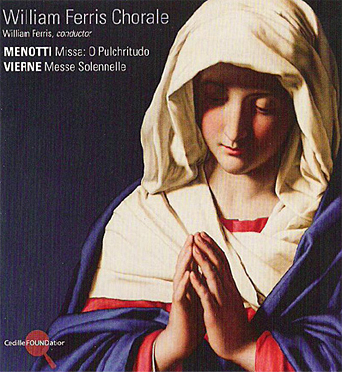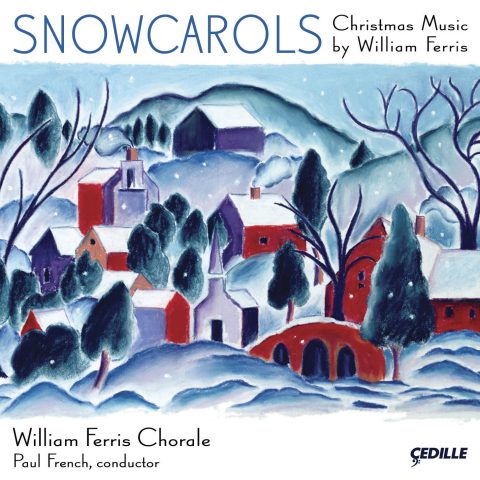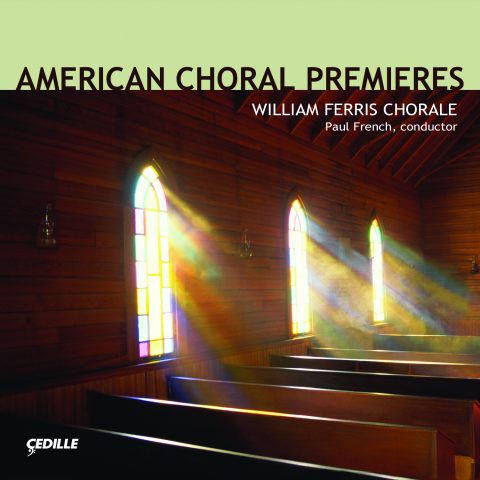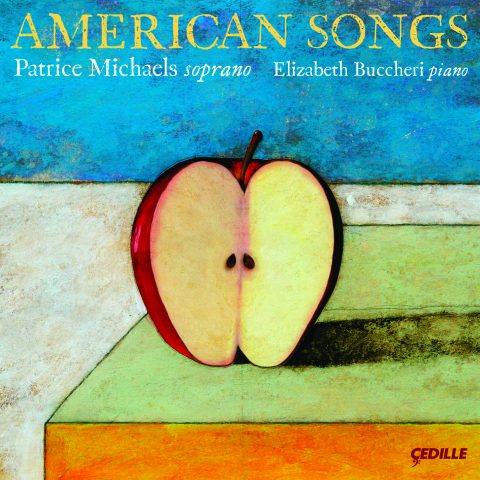Store
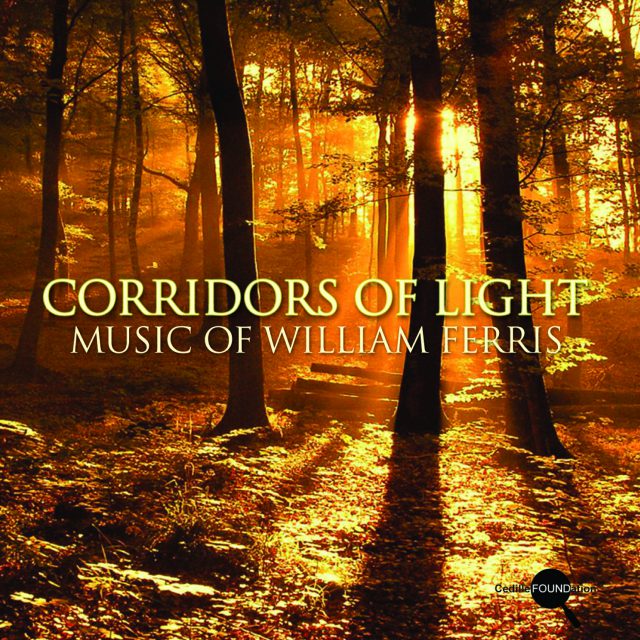
Store
Corridors of Light: Music of William Ferris
William Ferris, John Vorrasi, Sara Watkins, John Shirley-Quirk, Chicago String Ensemble, Alan Heatherington
Corridors of Light offers world-premiere recordings of four choral and orchestral works by revered American composer and choral director William Ferris (1937-2000). The generously programmed, mid-price CD with nearly 72 minutes of music is the first commercially distributed recording of a significant selection of Ferris’s orchestral compositions. The pieces, all written in the 1960s and 1990s, exhibit the composer’s distinctive sound, characterized by wistful, playful, and passionate melodies. Ferris himself conducts two of the performances.
Preview Excerpts
WILLIAM FERRIS (1937-2000)
Ed È Subito Sera
Artists
1: Patricia Spencer, soprano; Kathleen Meredith, alto; John Vorrasi, tenor; Philip Skeris, bass; William Ferris Chorale; Composer Festival Orchestra; William Ferris, conductor
2: John Vorrasi, tenor; Chicago String Ensemble; Alan Heatherington, conductor
6: London Symphony Strings; Arnie Roth, conductor
7: John Shirley-Quirk, baritone; Sara Watkins, oboe; William Ferris Chorale; Composer Festival Orchestra; William Ferris, conductor
Program Notes
Download Album BookletMusic of William Ferris
Notes by Francis Crociata
William Ferris was a born story-teller. Through words, gestures, and the alternately wistful, playful, and passionate melodies that were the heart of his compositions, he communicated, in vivid detail, his experiences of life, love, faith, and art.
I am not the first to observe that the quality and beauty of William Ferris’s music is far out-of-proportion to its relative obscurity. Nor am I the first to marvel that when Bill was taken from us in 2000, he left more than 500 works for virtually every medium. It is regrettable that his premature death (at age 63, as he led his Chorale in the opening bars of the “Lux Aeterna” of the Verdi Requiem) denied him the joy of this disc — the first widely-distributed recording of a significant selection of his orchestral music. This is what Bill desired most of all — the chance for his music to be heard by listeners with open ears and open hearts.
I believe William Ferris would have created his significant body of music even if he had not attracted the loyal, fervent band of admirers and benefactors who followed his career, swapping dubs of the rare orchestral and chamber music performances, subscribing to season after season of his William Ferris Chorale concerts, enjoying the privilege of being present at the creation of music we were convinced would stand the test of time. Having been one of their number and having enjoyed the friendship of Bill Ferris for 41 years, I can honestly say I have never encountered anyone else involved in the making of art who was more thoroughly convinced that he was put on this earth for one purpose: to create this lyrically conceived and lucidly expressed music — his music.
William Ferris was born in Chicago in 1937, the son of Irish-American-Catholic parents. He was the product of Catholic parochial education, the survivor of an extended hos-pitalization for polio, and a believing Catholic whose faith stayed with him all his life. Habits of study, instilled early, also stayed with him. He was widely and eclectically read in fiction, non-fiction, and poetry. During his long, productive career, in addition to writing music, he constantly worked as an organist/choirmaster, taught composition, and directed the William Ferris Chorale, often augmented by an orchestra that over the years became “his” orchestra. With his lifelong partner and collaborator, the tenor and poet John Vorrasi, Bill made miraculous music and miraculously raised money to provide a forum for composers such as William Walton, Ned Rorem, David Diamond, Robert Ward, Dominick Argento, Howard Hanson, Vincent Persichetti, William Schuman, Gian Carlo Menotti, John McCabe, William Mathias, and many more, all of whom he recognized as kindred spirits. They were composers with highly personal styles, too conservative for the academically prevailing avant garde and too modern for conservatives. What attracted Ferris the performing musician to them was also most important to Ferris the composer: they were artists who stayed true to their own styles, regardless of the winds of fashion. When Bill encountered that integrity in a fellow composer, his commitment to the person and his music was absolute.
Ferris’s own musical gifts were recognized early. As a child, his pleasing boy soprano voice was called upon at the boisterous gatherings of his extended family, heard at countless morning masses, and won prizes on radio amateur hours. As he finished high school, his keyboard skill and facile score-reading ability won him the position of organist at Chicago’s Holy Name Cathedral, a post he held during his studies with Arthur Becker, Paul Stassevitch, and Alexander Tcherepnin at DePaul University. Bowled over upon discovering the Organ Symphony of fellow-Chicagoan Leo Sowerby, he queried Dr. Becker and learned that Sowerby taught at a local conservatory. Ferris soon became Sowerby’s student on an informal, master-apprentice basis.
One story illustrates the most important lesson Bill derived from his five years in Sowerby’s studio. He had just heard, for the first time, a live performance of Stravinsky’s The Rite of Spring, presumably at one of Hans Rosbaud’s memorable Chicago Symphony concerts. Bill was thunderstruck and his sense of himself as a creative artist was shaken to the core. William Ferris was the most self-reflective person I’ve ever known and when it came to wrestling with his own emotions, there was nothing half-way. Sowerby, who knew a thing or two about laboring in semi-obscurity, assured his protégé that any composer “worth his salt” would feel humbled and challenged by this bedrock composition that did so much to free the creativity of 20th century artists. But he added that any good composer would look inside himself, find something worthwhile to say, and get it down on paper. “And forget about copying Stravinsky or anyone else. You can no more change your style than you can change your face. So you might as well get used to it and learn to use it. . . . And besides, Bill, would you really want to be the composer of The Rite of Spring?” Bill’s answer is heard on this disc — works from the 1960s and 1990s, all exhibiting the composer’s distinctive sound.
In the course of his life, Bill was fortunate to meet and receive the help of key figures who provided decisive assistance at crucial periods. Sowerby and Vorrasi were two of these. So was the legendary Catholic priest and preacher, Bishop Fulton J. Sheen, who invited Bill to serve as composer-in-residence at his Cathedral in Rochester, NY. There was John Edwards, president of the Chicago Symphony, who arranged a commission for Bill’s organ concerto, Acclamations, and engaged him to play it four times with the Symphony in Orchestra Hall. And, lastly, Father Thomas Healy, who brought Bill to Our Lady of Mt. Carmel Parish on Chicago’s North Side, giving him the freedom to write and perform like the great composer-organists who inspired Ferris — his teacher, Sowerby, the Frenchmen Vièrne, Dupré, Widor, and Messiaen, and the lesser-known Italians, Lorenzo Perosi and Licinio Refice. These composers were all encouraged by partners and benefactors who believed in them and their music. Ferris was similarly blessed by the friendship and support of Sowerby, Vorrasi, Sheen, Edwards, and Healy, all of whom, directly or indirectly, touch upon the creation of the four works presented here.
Gloria (1992)
Foremost among Ferris’s favorite composers (in addition to the host of Americans and British he championed) was an eclectic group composed of Verdi, Puccini, Delius, Bartók, Ravel, Honegger, and Poulenc. Despite this, one would be hard pressed to find a thematic or even stylistic connection between Ferris’s festival Gloria and Poulenc’s famous concert work. The connection lies in the impulse to recreate in the concert hall the sheer joy this moment in the familiar Catholic liturgy engenders in the faithful. And, indeed, this is a defining work in the music of William Ferris, with all of his stylistic hallmarks, captured here in an incisive and exultant performance, conducted by Ferris himself.
For the premiere of his Gloria on May 15, 1992, the composer provided these thoughts:
This large-scale setting of the ancient Latin hymn of praise was composed in celebration of the 20th anniversary season of the William Ferris Chorale. The individual sections are all defined by the text. The chorus and solo voices are influenced by the words in two distinct ways: primarily, as one would expect, by their literal meaning, and then by the rhythmic and formal shape which the vowels and consonants lend to the musical texture. The antiphonal use of orchestral and vocal choirs creates a rich and varied tapestry of musical color. Although filled with contrasts, the work flows forward in an inevitable manner.
The mood is one of fervent prayer and rich celebration. The angelic song echoes again on high: “Gloria in excelsis Deo!”
Ed È Subito Sera (1965)
This work was among Bill’s first for the concert hall that I heard him play at his beloved Yamaha upright and croak in his tobacco-tinged, once-tenor voice. Our mutual friend, John Vorrasi, was soloist in the work’s long-delayed March 10, 1989, premiere. This reflection is adapted from the notes Vorrasi penned for that first performance:
Italian author Salvatore Quasimodo (1901–1968) wrote the words Ferris set for Ed È Subito Sera. Quasimodo won the 1959 Nobel Prize for Literature “for his lyrical poetry, which with classical fire expresses the tragic experience of life in our own times.” Along with Giuseppe Ungaretti and Eugenio Montale, he is one of the foremost Italian poets of the 20th century. Quasimodo’s mature style is marked by increased clarity and sensitivity. He chose to interpret man’s history and fate with an underlying lament for human defeat in a violent universe.
Ed È Subito Sera was composed in 1965, just as Ferris’s mentor Leo Sowerby was leaving Chicago to found the College of Church Musicians at the National Cathedral in Washington, DC. It was a composition he never showed to Sowerby for advice because, as he said, there are just some works you cannot share with your teacher. Sowerby was a great classicist and no doubt Ferris was afraid that tinkering with the free flowing form of the work or superimposing formal structure would damage it. Originally conceived as a chamber work for tenor and string quintet, Ferris revised the instrumentation for full string orchestra in the spring of 1988, at the request of conductor Alan Heatherington. Ed È Subito Sera is quite operatic in scope and reflects, in a highly personal way, the sense of human fragility and the power of love so evident in the verse.
Bristol Hills (1969)
When Bill moved from Chicago to Rochester NY, he was “adopted” by the Vorrasi family and especially by John himself. Vorrasi took it upon himself to organize an orchestral concert, engaging a core of players from the Rochester Philharmonic, which provided the context for Bill to conduct a symphonic movement entitled October–November. The concert also involved a modest, but intense and driven church musician, David Fetler. Fetler managed to mount an annual season of chamber orchestra concerts for the Rochester Chamber Orchestra, which gave the first performance of this lush work for strings. Vorrasi recalls the circumstances and inspiration that gave rise to its composition:
On a trip to the nearby Finger Lakes region, I took Bill to the top of what seemed an unassuming hill. But once you climbed to the crest, you were suddenly at a great vista — the expanse of the green valley below and the light of the sun reflecting down on the distant Canandaigua Lake — all enveloped in an amazing silence broken only by a gentle wind and the muffled chirping of birds. This experience is captured in Bristol Hills, a work which bears the dedication: “To John, who taught me of the hills.”
Corridors of Light (1994)
James Buonemani was a student in Sacred Heart Cathedral School when Bishop Sheen called Bill to Rochester. Jim became Bill’s first composition student and, in adulthood, a renowned organist, composer, and conductor. For the first performance of Corridors of Light, Ferris provided the following commentary:
In 1993, when James Buonemani, the Director of Music at the Episcopal Church of the Epiphany in Washington, D.C., asked me to compose a work in celebration of the 150th anniversary of the historic parish’s founding, I was at once taken with the idea and accepted the commission. I was especially happy to accept since the first performance of the work was to be given by two remarkable artists: baritone John Shirley-Quirk and oboist Sara Watkins. Added to that, the text selected for the occasion was Stephen Spender’s The Truly Great. This extraordinary poem, written in 1934, is one of Spender’s most radiant and transcendental.
Although I felt humbled by the challenge of these words, I fell immediately under their spell and began work in earnest during February of 1994. The short score was finished on May 4, 1994, and the orchestration (for baritone, chorus, oboe, piano, percussion and strings) between May 25 and June 15.
Corridors of Light is a through-composed setting of the text, meaning that it is a non-formal, continuous structure, always reflecting the rhythm, shape and atmosphere of the words. There are several themes, harmonic textures and rhythmic motives of real importance that recur and commingle throughout the composition, but it is always the text itself which generates the music’s flow and gives the work its form.
The soloist and chorus are fairly equal partners throughout, but the oboe takes on a unique role. It serves to provoke the protagonist Baritone and chorus into song, and follows these vocal acclamations with rich periods of meditation in coloristic dialogue with the orchestra.
The oboe music also acts as a ritornello, giving the otherwise free structure points of reference. The music is modal and richly chromatic, but always very lyrical, and though filled with contrasts of mood and energy, moves relentlessly toward an inevitable, ecstatic conclusion.
It is my fond hope that this musical harbinger will help us reflect on the profound quality of Spender’s clarion call to faith and true humanity as we travel our short while toward the sun.
Album Details
Total Time: 71:40
Production Credits
Reissue Producer: James Ginsburg
Remastering: Bill Maylone
© 2010 Cedille Records/Cedille Chicago
CDR 7004
